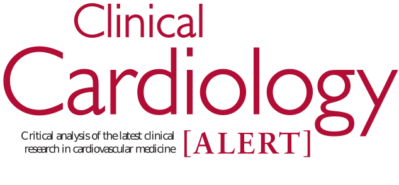
Clinical Cardiology Alert – October 1, 2025
October 1, 2025
View Issues
-
Routine CCTA Imaging of Left Main PCI Patients Falls Short in Randomized Trial
In this randomized trial of patients undergoing left main percutaneous coronary intervention, routine surveillance coronary computed tomography angiography six months after intervention did not reduce the composite endpoint of all-cause death, myocardial infarction (MI), unstable angina, or stent thrombosis at 18 months, but was associated with fewer spontaneous MIs and more imaging-triggered revascularization procedures.
-
Beta-Blocker Interruption Post-MI
An analysis of the secondary outcomes in the French multicentered study of beta-blocker withdrawal in patients with uncomplicated myocardial infarction after one year led to increases in heart rate and blood pressure with potentially deleterious outcomes, especially in patients with a history of hypertension.
-
Withdrawing Heart Failure Medications After Restoring Sinus Rhythm in AF Cardiomyopathy Patients
A small trial of withdrawing guideline-directed medical therapy (GDMT) for reduced ejection fraction (EF) heart failure in patients with atrial fibrillation in whom EF recovered after restoration of normal sinus rhythm has shown that withdrawal of GDMT was not associated with a decline in EF over 12 months in most patients.
-
Statins for Abdominal Aortic Aneurysms
An analysis of two large, abdominal aortic aneurysm (AAA) screening populations from Denmark has shown that high-dose statin therapy reduces the rate of AAA growth, the need for repair, and adverse outcomes, such as rupture and death.
-
What Are Hyperacute T-Waves and What Do They Mean?
A retrospective study of emergency department patients suspected of having an acute coronary syndrome has shown that a computer system for determining a new quantitative high-amplitude electrocardiogram (ECG) T-wave score has a high specificity and reasonable sensitivity for identifying patients with acute coronary occlusion that performs as well as ECG ST-elevation myocardial infarction criteria.